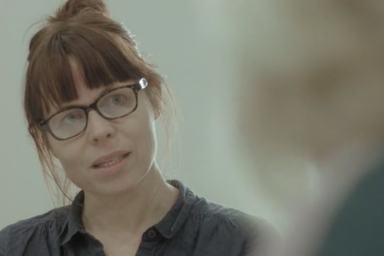1.4: Funding and Income
Section objective
In this section, we look at some of the alternative sources of funding with the objective of having an understanding of what is available in the dance sector, and laying the groundwork for thinking about how using copyright might help to supplement these sources.

Experiences of applying for funding
In the following clip, Kimberley Harvey talks about her experiences of applying for funding. How do her experiences relate to your own or those of artists you work with?
Kimberley Harvey – Applying for Funding[Audio, 6:03]
Kimberley mentions a number of resources during her reflection. Take a look at those that are of interest to you:
- Arts Council England: Get funding
- Metal Culture
- Choreographic commissions: Bringing dance to life [People Dancing]
- Shape Arts
- Disability Arts Online
External links will open in a new web browser tab.
What kind of funding is most appropriate for your work or the work of artists you work with?
Think about what Kimberley said about how she uses the ‘disabled’ category. How do you or the artists you work with use/not use this category? Why is it that you/they make these choice
Government Support
As we discussed in the previous section, disabled people have certain rights under the Human Rights Act. It is the Government’s job to help ensure that these rights are met. One of the ways they do this is by providing structural and financial support for people with disabilities.
One of the Government schemes mentioned by Kimberley is Access to Work. In the UK, disabled people who are in work are entitled to receive money from the Government to support their needs in the workplace through this scheme.
On the Access To Work website, work through the pages on “Overview” and “Eligibility” where you will see what disabled people are entitled to to gain access to work:
- Access To Work [GOV.UK]
In reading this website, consider what are some of the barriers or difficulties posed by the eligibility criteria are.
Access to Work has been in the news a lot in recent years. After the 2015 General Election, the Government planned cuts and to cap the funding given to disabled people for Access to work as it was becoming too expensive as you will read in the article below.
- Government releases document on planned cuts to disabled work access scheme – hours after Conservatives win general election [The Independent]
External links will open in a new web browser tab.
Access to work in depth
Jenny Sealey, Artistic Director of Graeae Theatre Company, has spoken about why stops should be made to cuts of access to work and why it is an essential funding system for Deaf people.
- Jenny Sealey: Stop Changes To Access To Work Campaign [YouTube, 2:18]
Although cuts were not formally announced, some people, including John Pring suggest that there have been cuts to the scheme that have made it harder to receive funding.
- Drop in Access to Work numbers shows DWP ‘is strangling the scheme’ [Disability News Service]
External links will open in a new web browser tab.
Personal Independence Payment
The Personal Independence Payment (PIP) is another Government scheme which can allow people help with some of the extra costs caused by long term ill-health or disability.
- Personal Independence Payment [GOV.UK]
This has been brought in to slowly replace the Disability Living Allowance (DLA).
- Disability Living Allowance [GOV.UK]
This transition has caused some controversy, as discussed by George Bowden in the following article:
External links will open in a new web browser tab.
Further questions
Now that you have considered some of the ways that funding is distributed consider the following questions:
- Which forms of funding are most appropriate for you or the artists you work with?
- What kinds of difficulties might disabled artists face when applying for funding?
- What are the disadvantages and benefits of replacing the DLA with the PIP?
